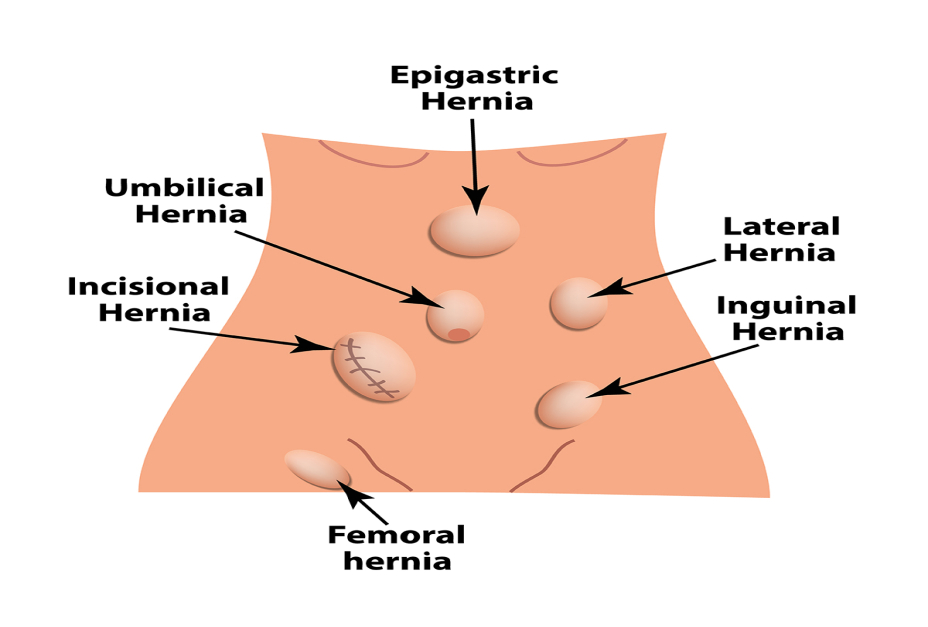Hernia? Isn’t that something that happens only to athletes or only bodybuilders and weightlifters?
You may also have such similar questions in mind but the truth isn’t the same. Hernias happen more often than you think. A hernia can happen to men, women, and children. However, overall hernias do tend to be more common in men than women. You may not be born with a Hernia but you may end up getting one. Not many know but Hernias can cause complications that can be life-threatening. It’s important to seek emergency care if you experience symptoms. Though Hernias often show no troublesome symptoms, frequent abdominal complaints may signal a serious problem. Let us now learn more about Hernia and its various types.
What is a Hernia?
A hernia occurs when an internal organ or fatty tissue compresses through the wall of tissue or muscle that contains it which is referred to as the fascia. Most hernias are found within the abdominal cavity which lies between the chest and hips. Usually, an abnormal bulge under the skin of the abdomen near the groin or the navel is observed. Anything that increases the pressure in the abdomen can result in a hernia, this can be by lifting heavy objects, diarrhea or constipation, obesity, persistent coughing or sneezing or even after giving birth.
There are mainly six types of Hernias: Inguinal Hernia, Femoral Hernia, Umbilical Hernia, An incisional hernia, Epigastric Hernia, and Hiatal hernia.
- Inguinal Hernia: This is one of the most common forms of Hernia which usually affects men more often as compared to women. In an Inguinal Hernia, a part of the intestine penetrates a little into the groin at the top of the inner thigh through the inguinal canal post-birth after which the canal is supposed to close almost completely behind them. This type of Hernia may be painful or touch-sensitive. Some symptoms may include swelling in the groin, burning sensation or pain while coughing and while bending over.
- Femoral Hernia: A femoral hernia is common in women as compared to men. A part of the intestine or the fatty tissue enters the canal that carries the femoral artery into the upper thigh. Women who are obese or pregnant have a higher chance of having a femoral Hernia. Most femoral hernias cause no symptoms but one may have some groin discomfort. It may get worse while standing, lifting heavy objects, or strain.



- Umbilical Hernia: Common in infants and sometimes also affects obese women or the ones who have had many children. This is caused when a part of the small intestine protrudes through the abdomen near the navel. Umbilical hernias in children are usually not that painful but if they appeared at an older age then it may cause abdominal discomfort, vomiting, etc.



- Hiatal Hernia: A hiatal hernia is when your stomach bulges up into your chest through an opening in your diaphragm, the muscle that separates the lungs from the abdominal organs. The opening is called the hiatus, so this condition is also called a hiatus hernia. A lot of people might not notice any symptoms but few might have heartburn, bloating, burping, upset stomach and vomiting.
- Incisional Hernia: This is more prominent if you’ve had any previous abdominal surgery. The intestine pushes through the abdominal wall where the surgery had occurred. Apart from a prominent bulge, incisional hernias might also cause nausea, vomiting, diarrhea, thin stool, burning sensation and fever.
- Epigastric Hernia: In Epigastric hernia, a fatty portion of the intestine pushes through the abdominal wall between the belly button and the chest. The bump or bulge caused due to this phenomenon is visible all the time or sometimes only when one coughs, sneezes or laughs. This type of Hernia is often seen more in men than in women. It is said the epigastric hernia may occur due to increasing tension on the abdominal wall near the diaphragm.



Ultimately, the fact is that one can get Hernia either by birth or can develop as they age. The treatment for hernia can be either surgical or non-surgical. However, most of the Hernias need surgical repair. It is always recommended to get yourself checked by an expert as soon as any of the above-mentioned symptoms continue to cause severe pain and discomfort.







